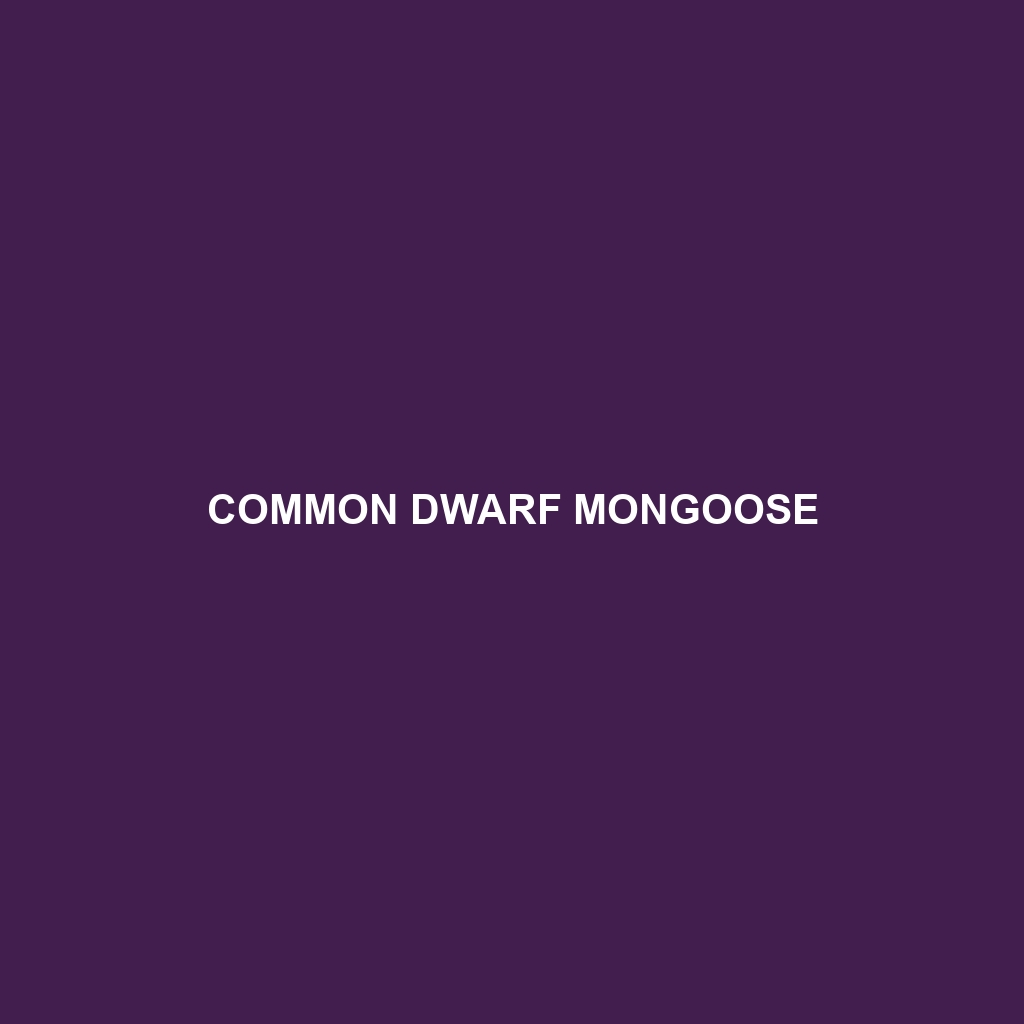Ethiopian Dwarf Mongoose: Species Description
Common Name: Ethiopian Dwarf Mongoose
Scientific Name: Helogale parvula
Habitat: The Ethiopian Dwarf Mongoose is primarily found in the eastern and southern regions of Africa, specifically in countries such as Ethiopia, Kenya, and Tanzania. These small mammals thrive in a variety of environments, including savannas, grasslands, and wooded areas. They prefer habitats with plentiful ground cover where they can easily burrow and hide from predators, often occupying areas near rocky outcrops or termite mounds.
Physical Characteristics: The Ethiopian Dwarf Mongoose is one of the smallest mongooses, measuring about 25 to 35 centimeters in length and weighing between 0.6 to 1.0 kilograms. Their fur is typically a reddish-brown to grayish color, with lighter underparts and darker stripes along their backs. They possess short legs and a slender body, making them agile and well-adapted for quick movements in search of food. Their sharp, pointed snout and small, rounded ears add to their distinctive appearance.
Behavior: Ethiopian Dwarf Mongooses exhibit highly social behaviors, often living in groups called “mobs” comprising up to 16 individuals. They are known for their cooperative breeding strategies, where multiple females within a group can nurse the young. These mongooses are diurnal, active during the day, and display behaviors such as grooming and playing, which strengthen social bonds. Their vigilance against predators and their ability to communicate with a range of vocalizations are also notable traits.
Diet: The diet of the Ethiopian Dwarf Mongoose primarily consists of insects and small invertebrates, including termites, beetles, and caterpillars. They also consume small mammals, reptiles, and fruits when available. Their keen sense of smell allows them to locate food buried underground, and their foraging techniques are vital to their survival in the wild.
Reproduction: Ethiopian Dwarf Mongooses reach sexual maturity at around one year of age. Breeding occurs year-round, but peaks may happen during the rainy season when food is abundant. After a gestation period of about 60 days, females give birth to litters ranging from two to six pups. The pups are born blind and dependent on their mothers for care, and they typically start to venture out of the den at about four to five weeks old.
Conservation Status: According to the IUCN Red List, the Ethiopian Dwarf Mongoose is currently categorized as “Least Concern”. However, like many species, they face threats from habitat loss and degradation. Ongoing monitoring of their populations is essential to ensure they remain stable in the wild.
Interesting Facts: The Ethiopian Dwarf Mongoose is known for its impressive agility and can climb trees to escape danger. They often exhibit playful behavior, engaging in wrestling and chasing games, which are critical for social interaction within their groups. Additionally, they have been observed using tools, making them one of the few non-primate species to show this behavior.
Role in Ecosystem: As predators of insects, Ethiopian Dwarf Mongooses play a crucial role in controlling insect populations within their habitats. Their burrowing behavior can also aid in soil aeration, thereby enhancing ecosystem health. Furthermore, they serve as prey for larger predators, contributing to the food web dynamics of their ecosystems.
